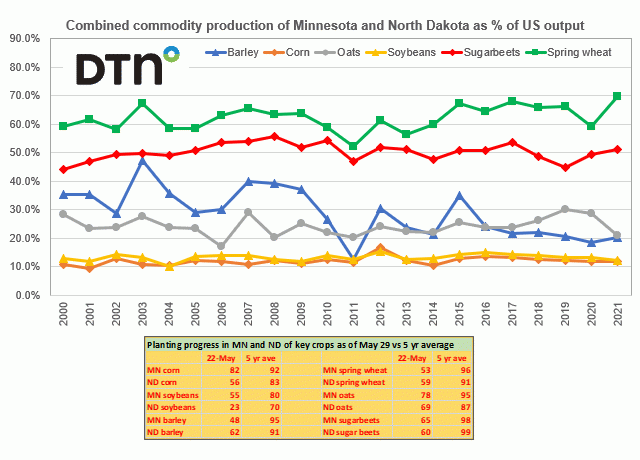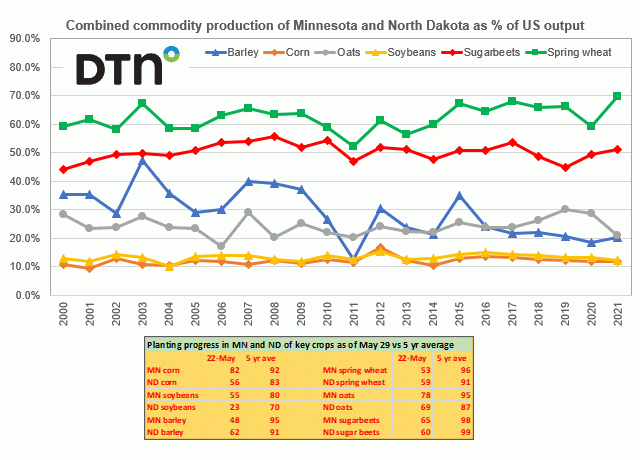Fundamentally Speaking
Lagged Plantings in ND, MN
In a prior blog we noted that this year's initial oat rating is in fact the lowest first crop rating of the year since national oat crop ratings started in 1996 and well below the year ago figure which itself was the third worst initial crop rating.
Given that the bulk of oats are grown in the Upper Midwest and Northern Plains, especially in North Dakota and Minnesota where over the past two months large sections of the two states have received two to as much as five times the normal amount of precipitation that they usually get.
As a consequence, plantings of a number of crops grown up there are well behind the normal pace, likely the reason why the first oat crop ratings of the year were so poor.
P[L1] D[0x0] M[300x250] OOP[F] ADUNIT[] T[]
Along these lines this graphic shows that the combined barley, corn, oats, soybean, spring wheat and sugarbeet production from North Dakota and Minnesota from 2000 to 2021.
Note that for corn and soybeans these two states account for at least 10% of the national total while their share of U.S. output of other key crops is even larger, especially of spring wheat at over 70% and both states producing over half the U.S. sugarbeet crop.
Though U.S. spring wheat planting advanced 24% over the past week to 73% completed as of Sunday vs. trade expectations that 67% of the crop would be seeded, that is still 19% behind average for the end of May.
Plantings stood at 59% in North Dakota vs. 91% on average and 53% in Minnesota vs. 96% for the five-year average.
Meanwhile though both national corn and soybean seeding paces have caught up to average, the laggards remain both MN and ND with the former having 82% of their corn seeded as of Sunday which is 10% behind average and ND at 56% planted which is a more sizable 27% behind the average.
The numbers for soybeans are even slower with MN at 55% seeded, 25% behind the average, and ND at 23% planted, a huge 47% behind the average.
It is now June 1 so a good bit of intended corn acreage in these two states will not be sown to that crop, maybe to spring wheat or some minor oilseed but more likely to be enrolled in the prevented planted insurance program.
(c) Copyright 2022 DTN, LLC. All rights reserved.






Comments
To comment, please Log In or Join our Community .